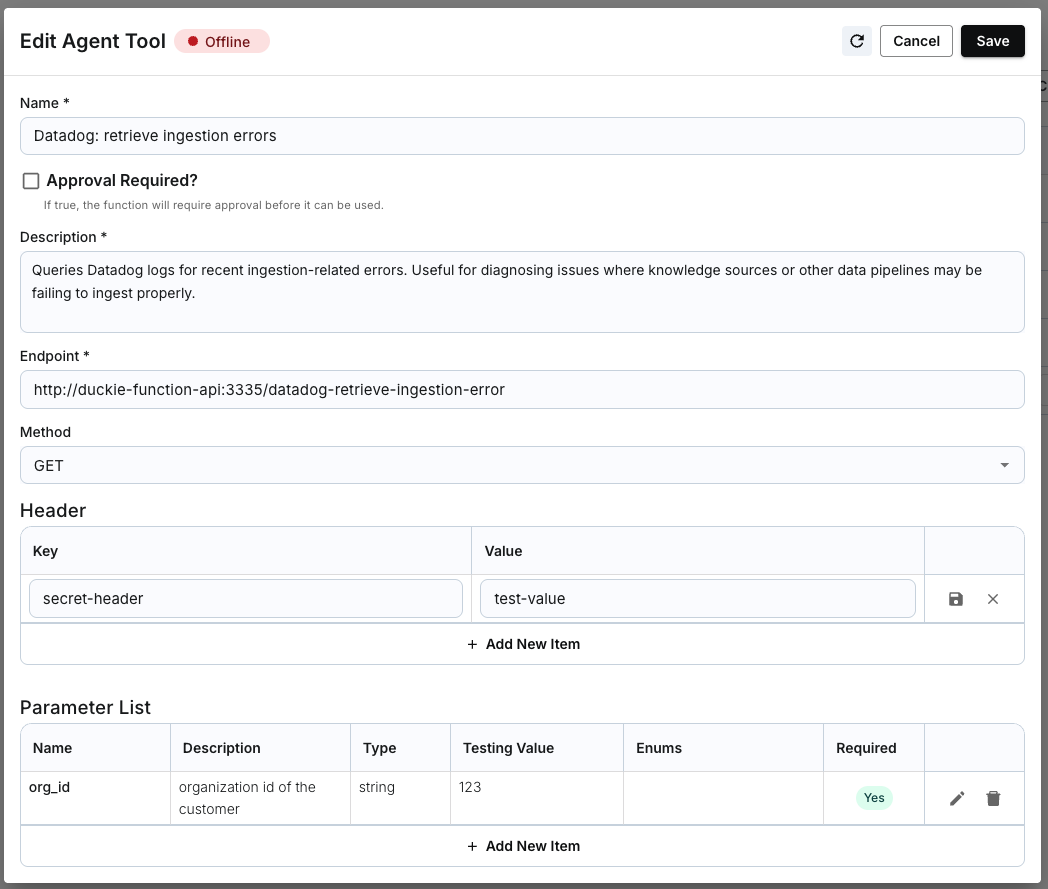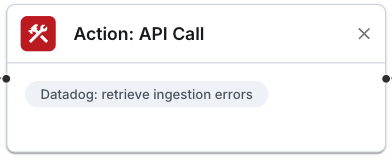pip install fastapi uvicorn requests datadog-api-client
### Datadog API Credentials
Obtain your **Datadog API Key** and **Application Key** from the [Datadog API Key Management](https://app.datadoghq.com/organization-settings/api-keys).
## 2. Writing the API Wrapper
**Please note that these are templates for references only, the logic will need to be modified for your particular use case.**
Create a file `api.py`:
```python
from fastapi import FastAPI, HTTPException, Header, Query
import requests
app = FastAPI()
DATADOG_API_KEY = "your_api_key"
DATADOG_APP_KEY = "your_app_key"
DATADOG_LOGS_URL = "https://api.datadoghq.com/api/v2/logs/events/search"
# Step 1: Retrieve container ID
@app.get("/get-container")
def get_container_id(caller_id: str, x_api_key: str = Header(None)):
response = requests.get(DATADOG_LOGS_URL, headers={
"DD-API-KEY": DATADOG_API_KEY,
"DD-APPLICATION-KEY": DATADOG_APP_KEY
}, params={
"query": f"caller_id:{caller_id}",
"sort": "desc"
})
logs = response.json().get("data", [])
if not logs:
raise HTTPException(status_code=404, detail="No logs found for caller_id")
container_id = logs[0].get("attributes", {}).get("container_id", "Unknown")
return {"container_id": container_id}
# Step 2: Fetch logs with filters
@app.get("/get-logs")
def get_logs(container_id: str, tool_keyword: str = Query(None), x_api_key: str = Header(None)):
response = requests.get(DATADOG_LOGS_URL, headers={
"DD-API-KEY": DATADOG_API_KEY,
"DD-APPLICATION-KEY": DATADOG_APP_KEY
}, params={
"query": f"container_id:{container_id} {tool_keyword if tool_keyword else ''}",
"sort": "desc"
})
logs = response.json().get("data", [])
return {"logs": logs}
 Once configured, your Agent Tool can be added to workflows to let Duckie invoke it as part of handling tickets.
Once configured, your Agent Tool can be added to workflows to let Duckie invoke it as part of handling tickets.


